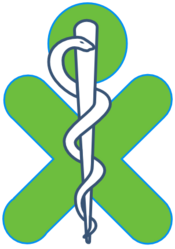Nutrition: Difference between revisions
Jump to navigation
Jump to search
| Line 53: | Line 53: | ||
*children: |
*children: |
||
*UL: 3 mg (10,000 IU)</td> |
*UL: 3 mg (10,000 IU)</td> |
||
<td>Fat |
<td>Fat</td> |
||
<td> Night-blindness, |
<td> Night-blindness, |
||
Keratomalacia</td> |
Keratomalacia</td> |
||
| Line 62: | Line 62: | ||
<td>Vitamin B1</td> |
<td>Vitamin B1</td> |
||
<td>Thiamin</td> |
<td>Thiamin</td> |
||
<td> |
<td>*men: 1.2mg |
||
*women: 1.1mg |
|||
| ⚫ | |||
</td> |
|||
<td></td> |
<td>Water</td> |
||
| ⚫ | |||
<td>green peas, spinach, navy beans, nuts, pinto beans, legumes, bananas, soybeans, Goji berries, whole-grains, unpolished rice, liver, beef, pork, .</td> |
|||
</tr> |
</tr> |
||
Revision as of 17:55, 7 March 2008
Introduction
The nutrition project aims to create educational tools for children to learn about diet, exercise, and nutrition.
Project suggestions
- Informational materials
- Interactive learning tools (i.e. games)
- Food analysis application
Floating Materials
This section is for posting materials that can be used for developing educational activities. The source of data should always be noted, so that in case that the information is contested, we can take a look at the original documents. If we start seeing lots of detailed information, we can create a page for each nutrient.
1. Micronutrient
Definition
The following information from USDA.
Vitamins
| Micronutrient | Synonymous names | RDA and Toxicity | Solubility | Deficiency | Sources |
|---|---|---|---|---|---|
| Nutrient Name | Other names | RDA and toxicity levels | Fat or water soluble? | Clinical Manifestation upon deficiency | Which food is high in this nutrient? |
| Vitamin A | Retinoids = retinol, retinoids and carotenoids |
|
Fat | Night-blindness, Keratomalacia | carrots, broccoli leaves, kale, sweet potatoes, spinach, pumpkins, collard greens, cantaloupe melon, apricots, papaya, peas, beet, winter squash, eggs, liver |
| Vitamin B1 | Thiamin | *men: 1.2mg
|
Water | Beriberi | green peas, spinach, navy beans, nuts, pinto beans, legumes, bananas, soybeans, Goji berries, whole-grains, unpolished rice, liver, beef, pork, . |
| Vitamin B2 | Riboflavin | ||||
| Vitamin B3 | Niacin, niacinamide | ||||
| Vitamin B5 | Pantothenic acid | ||||
| Vitamin B6 | Pyridoxine, pyridoxamine, pyridoxal | ||||
| Vitamin B7 | Biotin | ||||
| Vitamin B9 | Folic acid, folinic acid | ||||
| Vitamin B12 | Cyanocobalamin, hydroxycobalamin, methylcobalamin | ||||
| Vitamin C | Ascorbic acid | ||||
| Vitamin D | Ergocalciferol, cholecalciferol | ||||
| Vitamin E | Tocopherols, tocotrienols | ||||
| Vitamin K | phylloquinone, menaquinones |
Minerals
| Minerals | Synonymous names | RDA | Essential | Deficiency | Sources |
|---|---|---|---|---|---|
| Mineral Name | Other names | RDA by which country | Essential or trace? | Clinical Manifestation upon deficiency | Which food is high in this mineral? |
| Calcium | Ca | ||||
| Chloride | Cl | ||||
| Magnesium | Mg | ||||
| Phosphorus | P | ||||
| Potassium | K | ||||
| Sodium | Na |
People
- Mika - I am interested in developing a teaching tool for nutrition and exercise.
Useful Links
- The MOST project USAID micronutrient program
